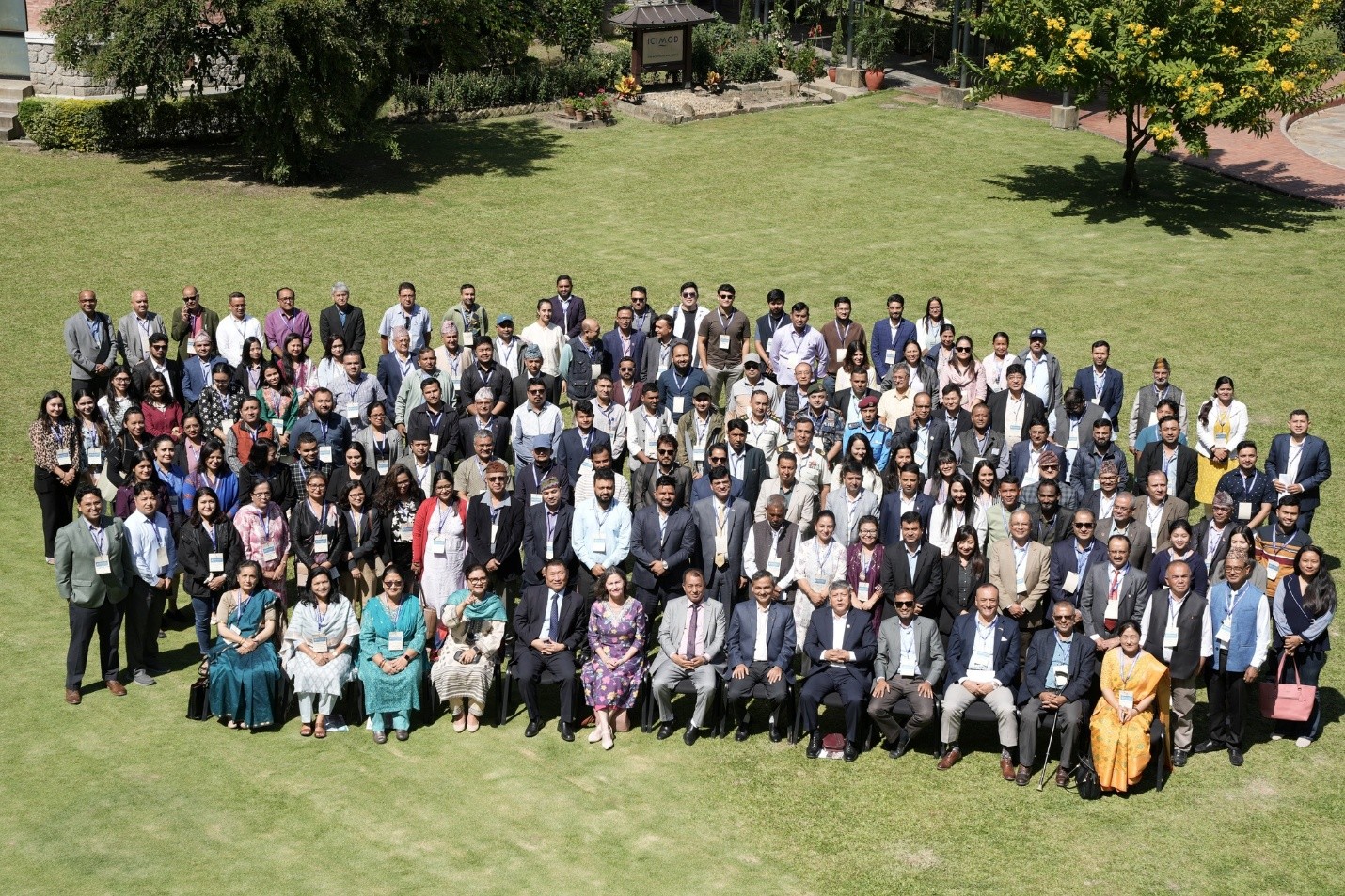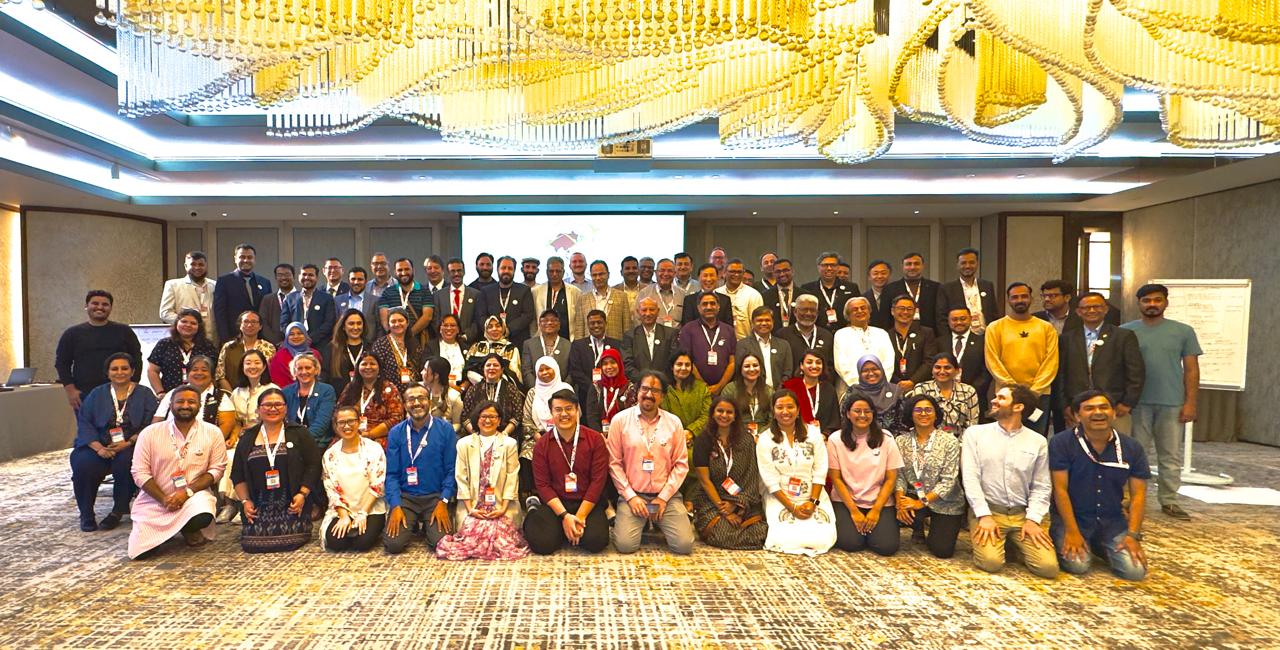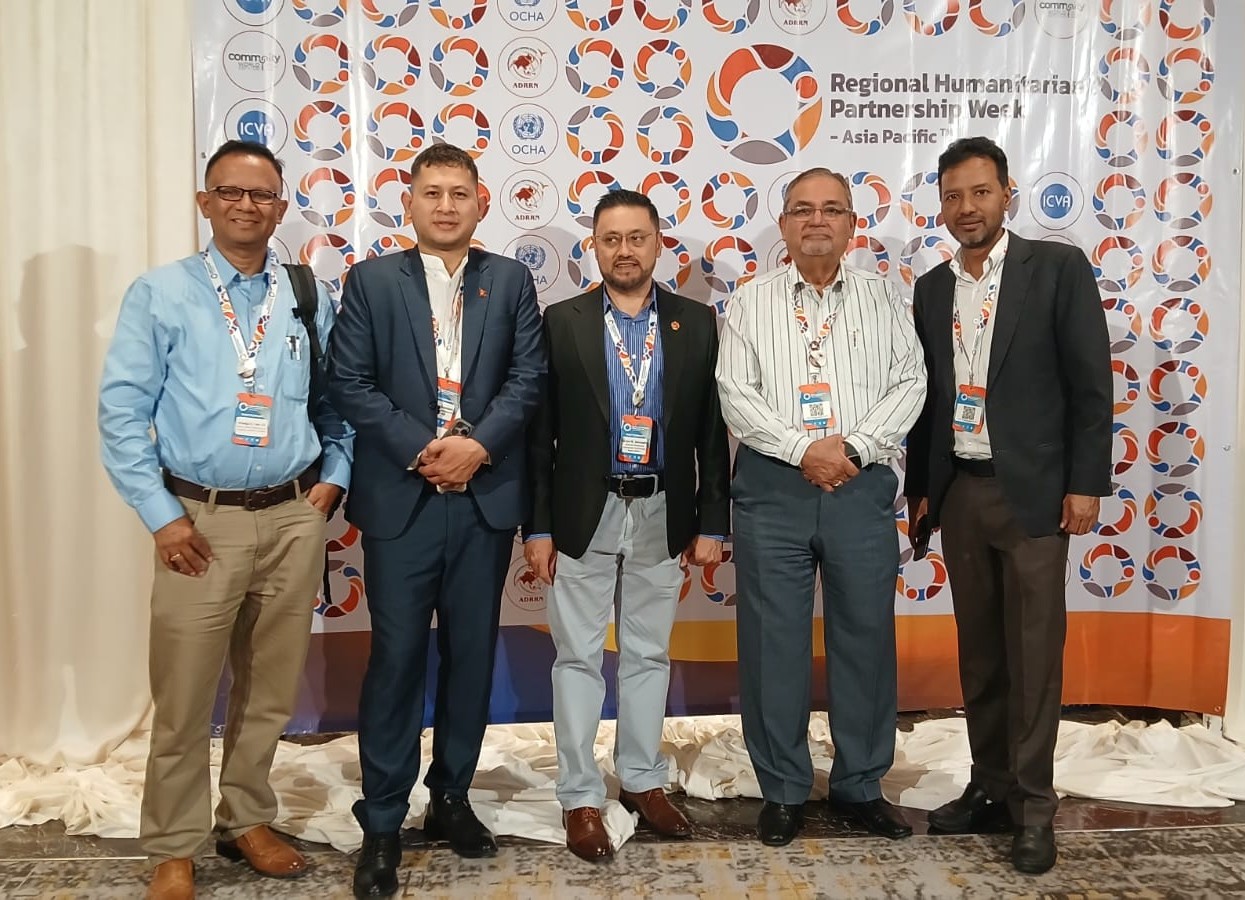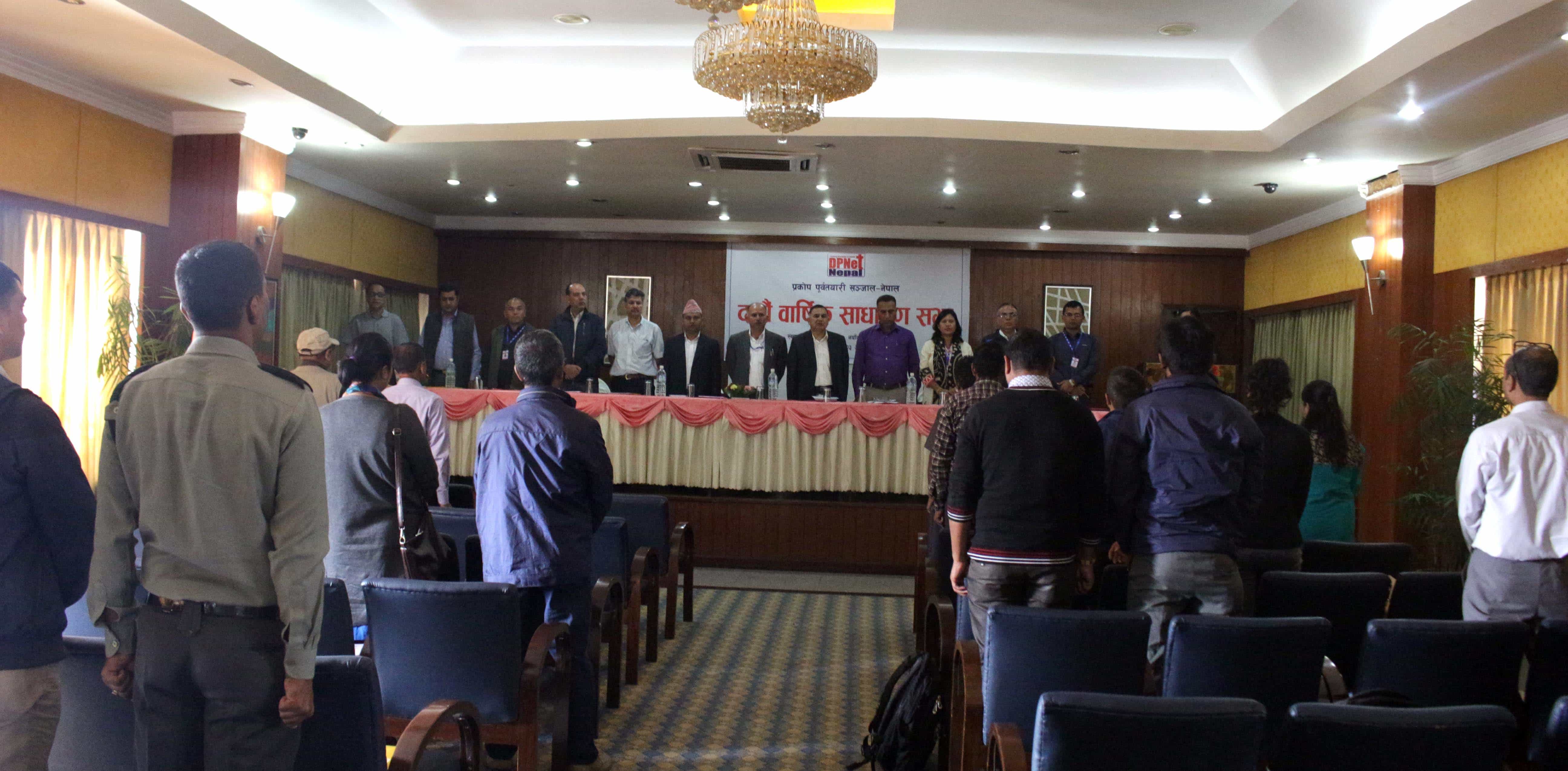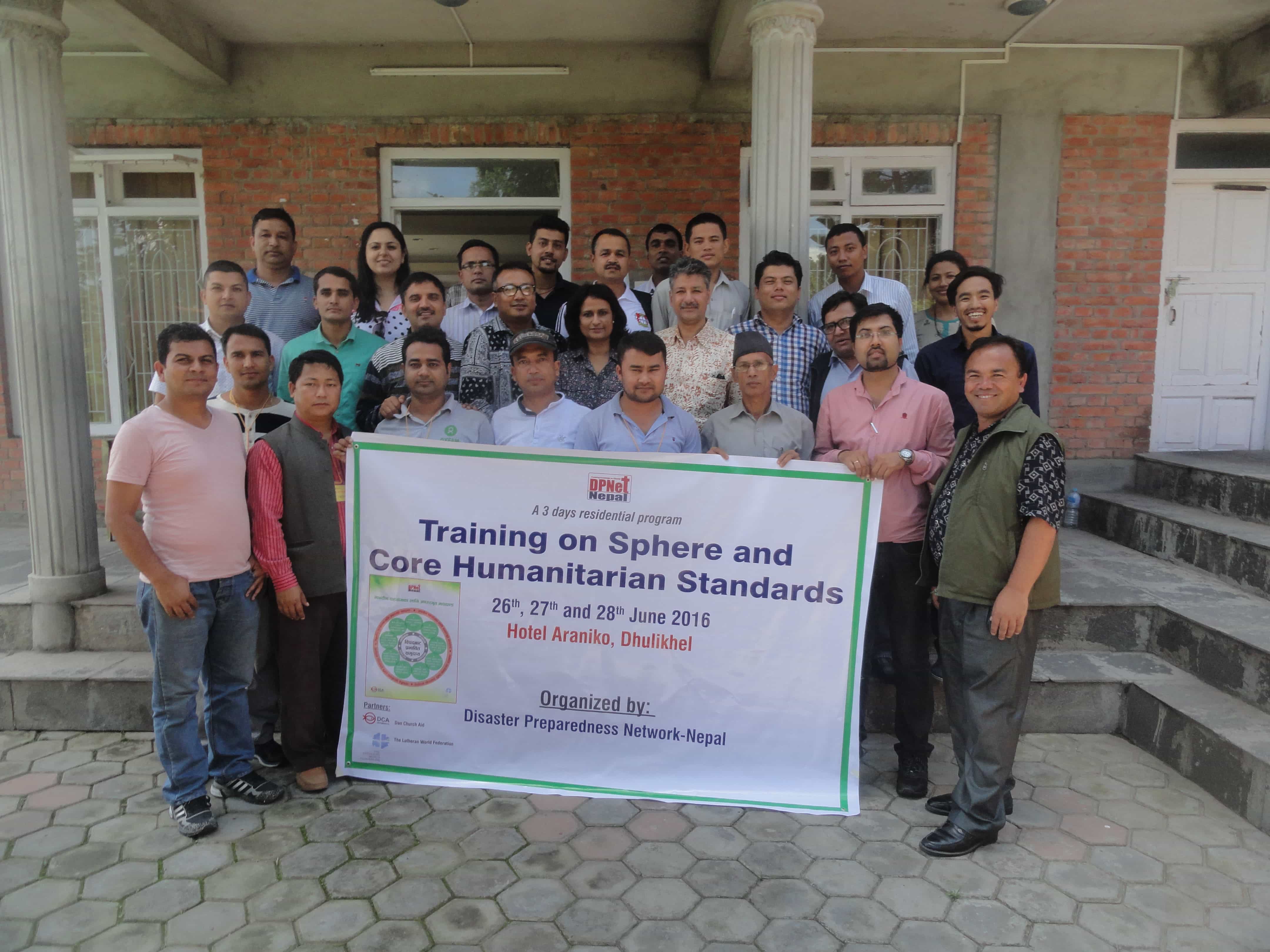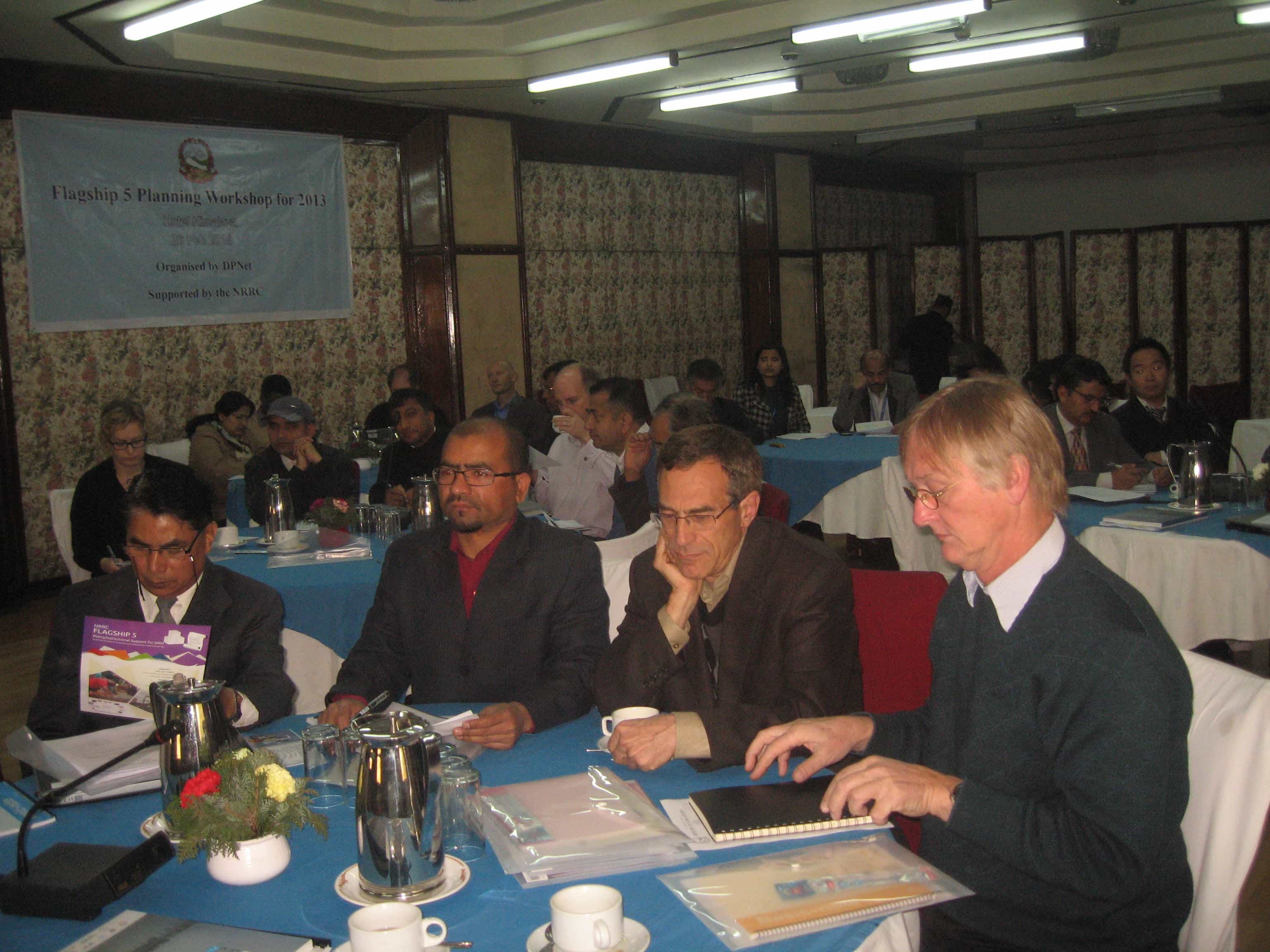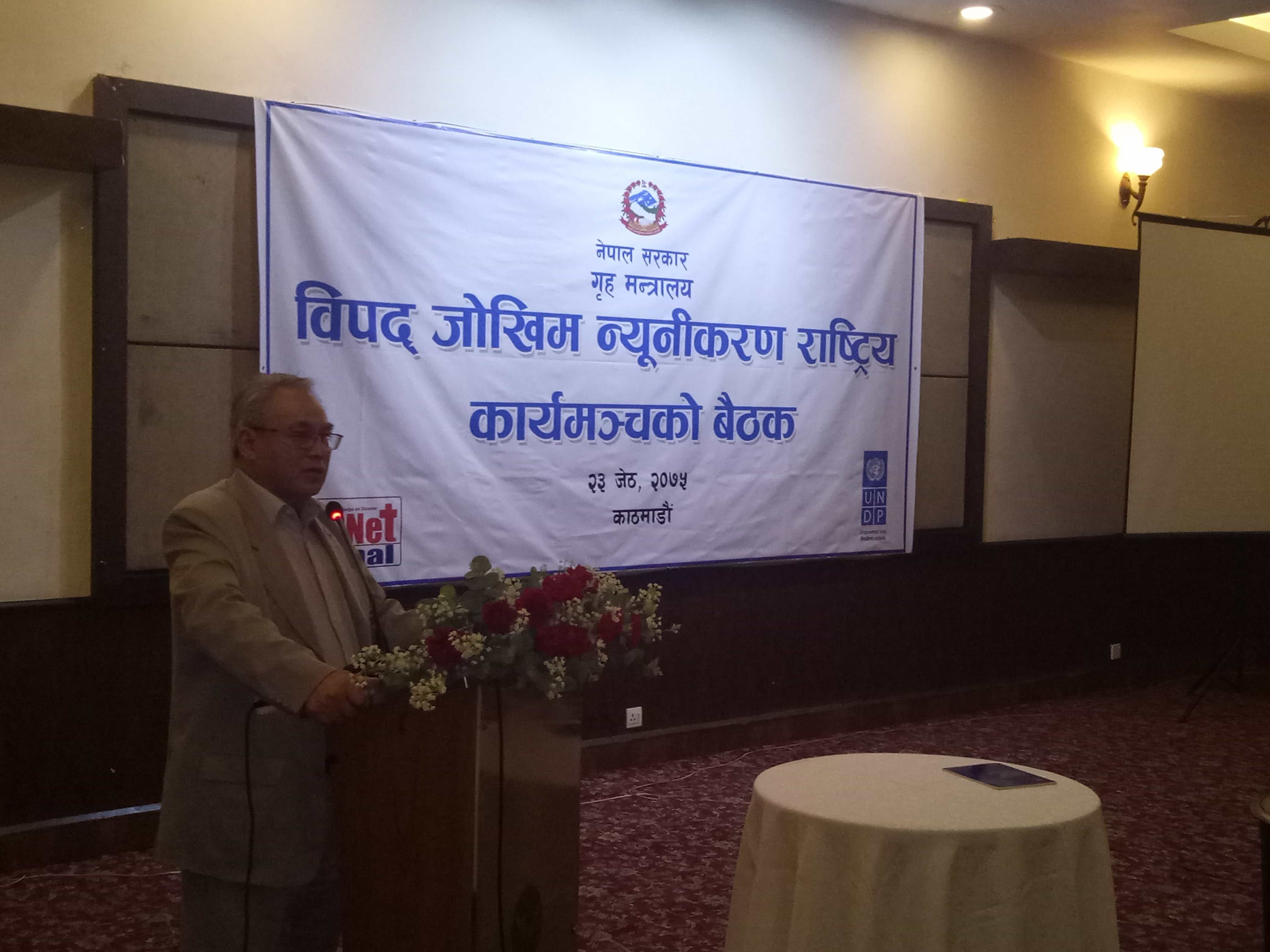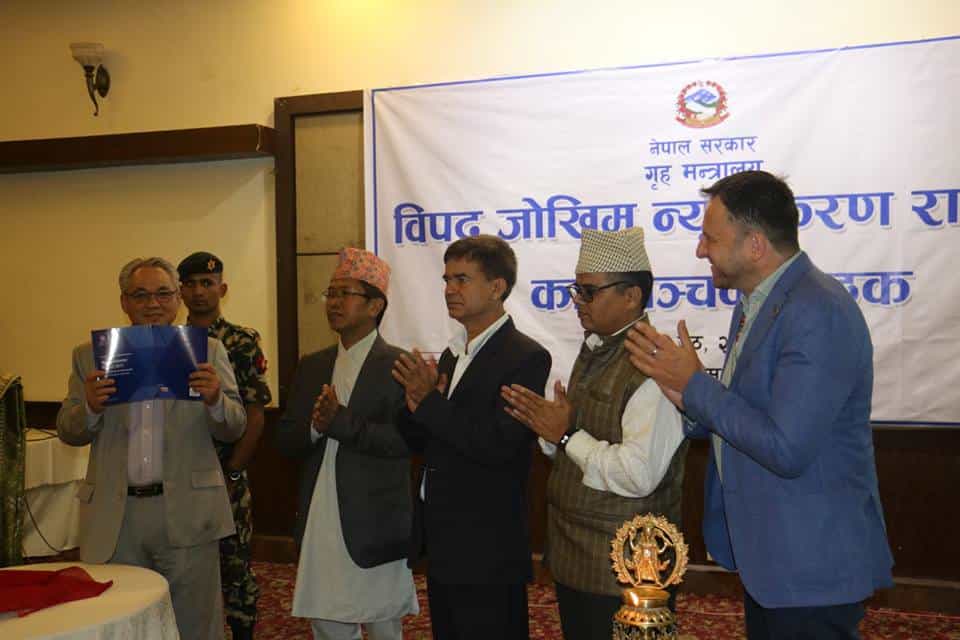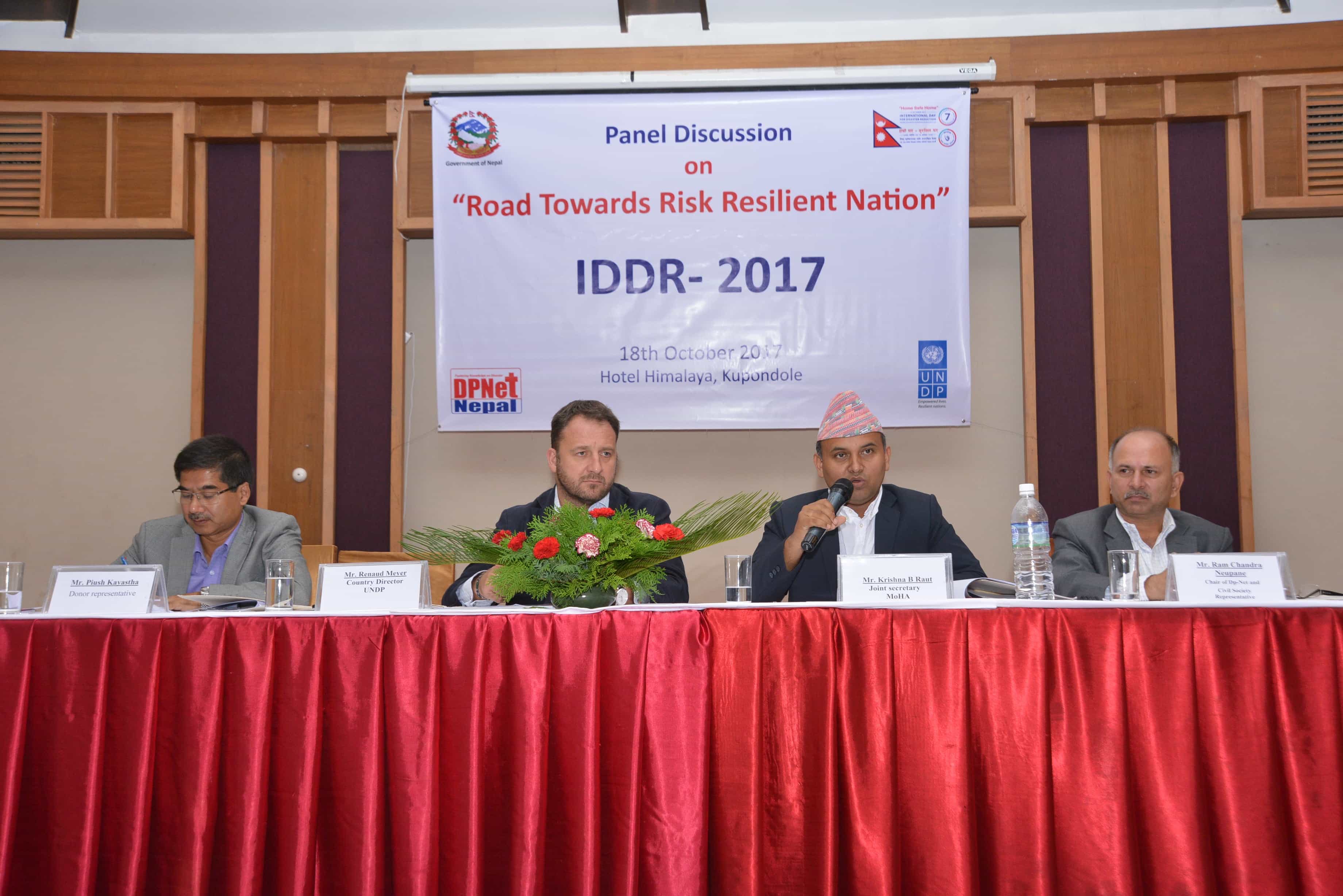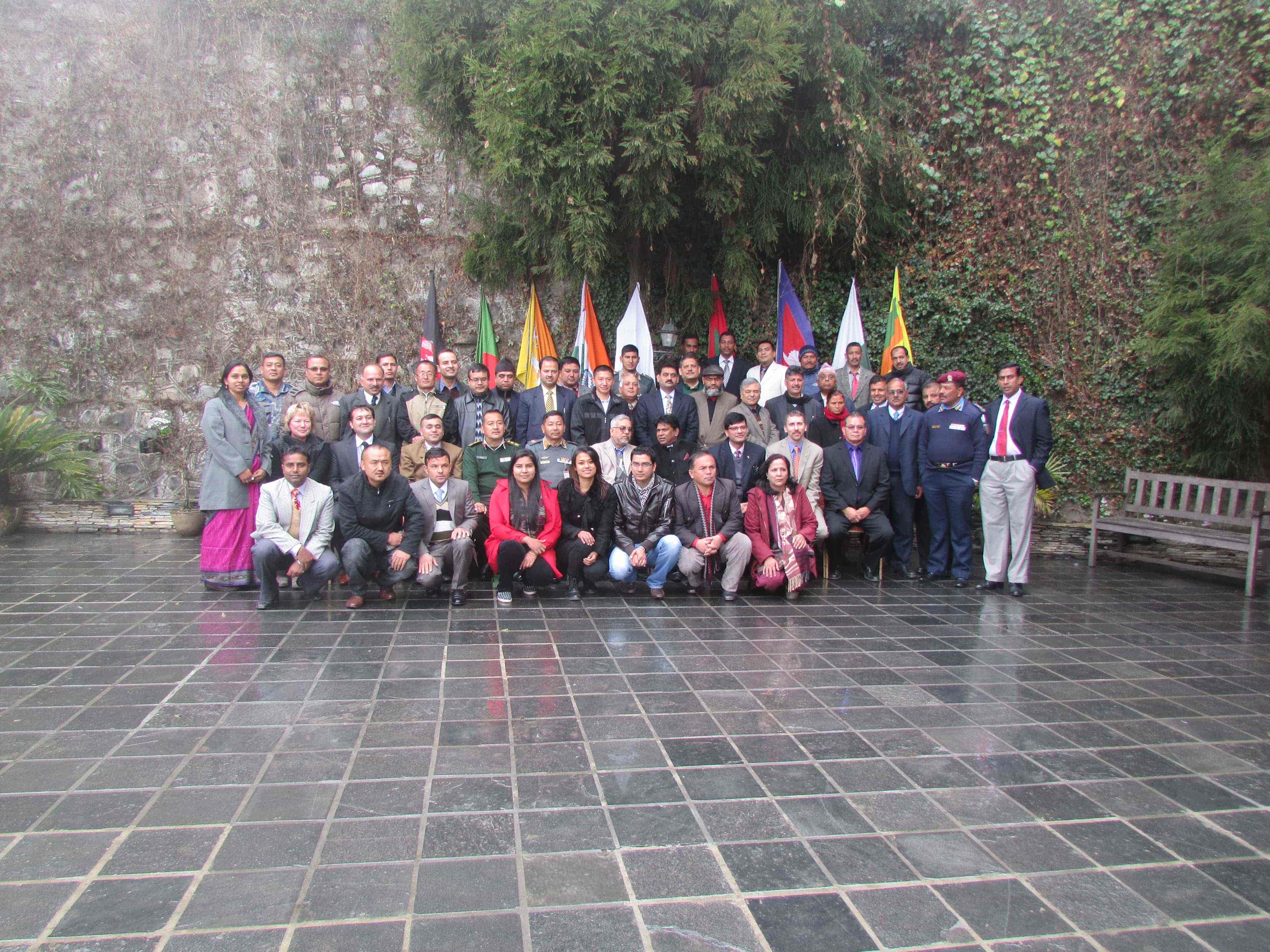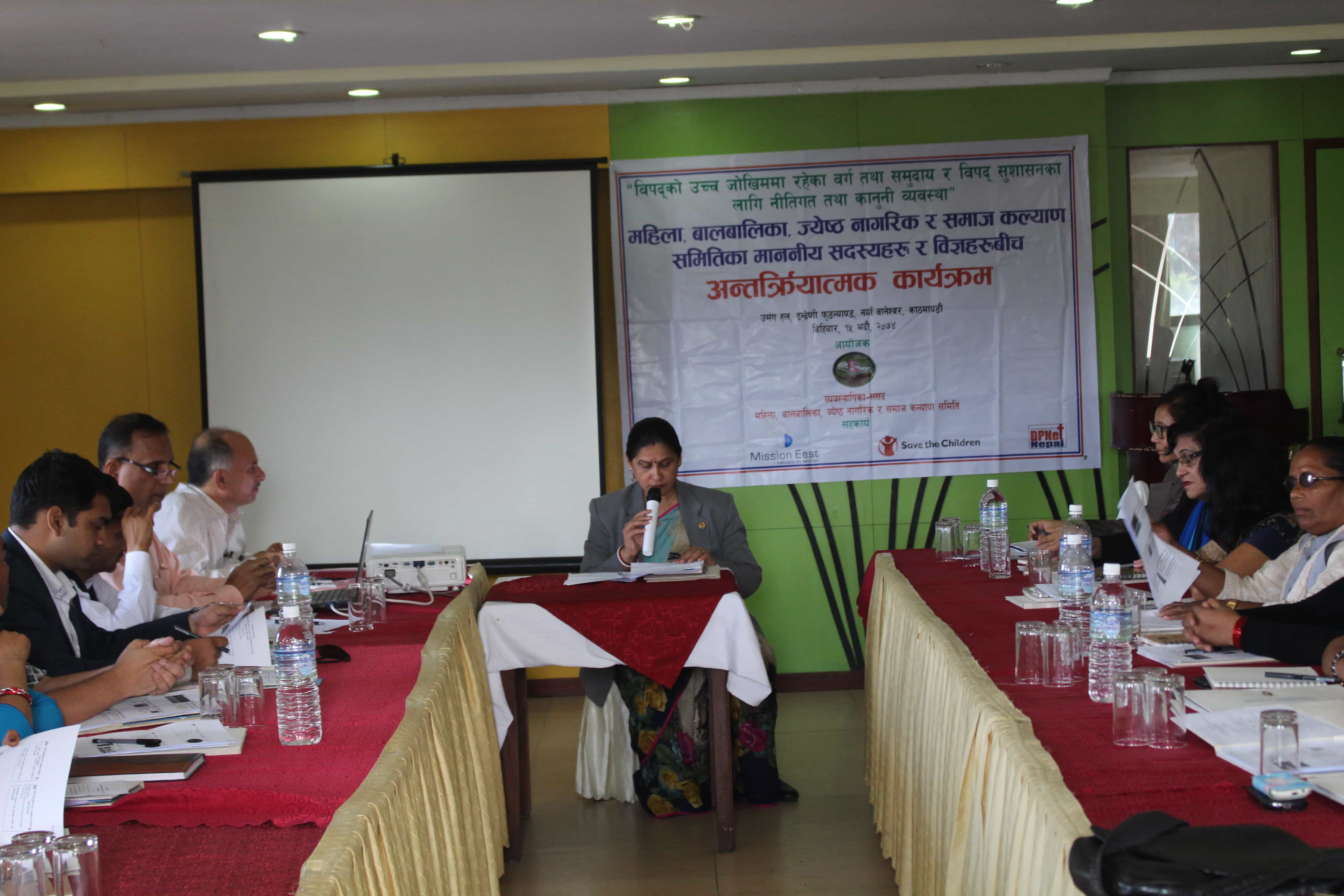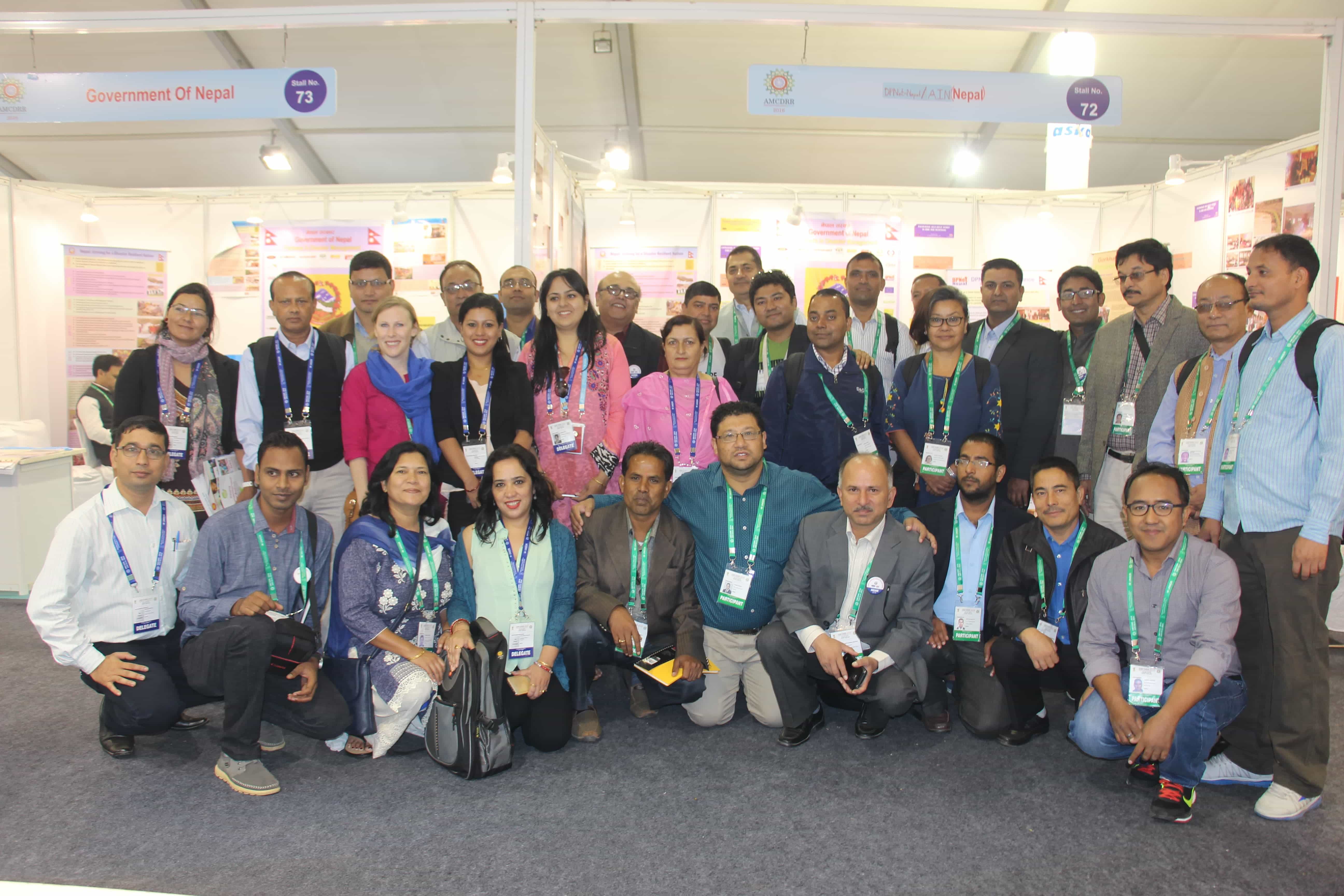Discussion Program on Jajarkot Earthquake Recovery
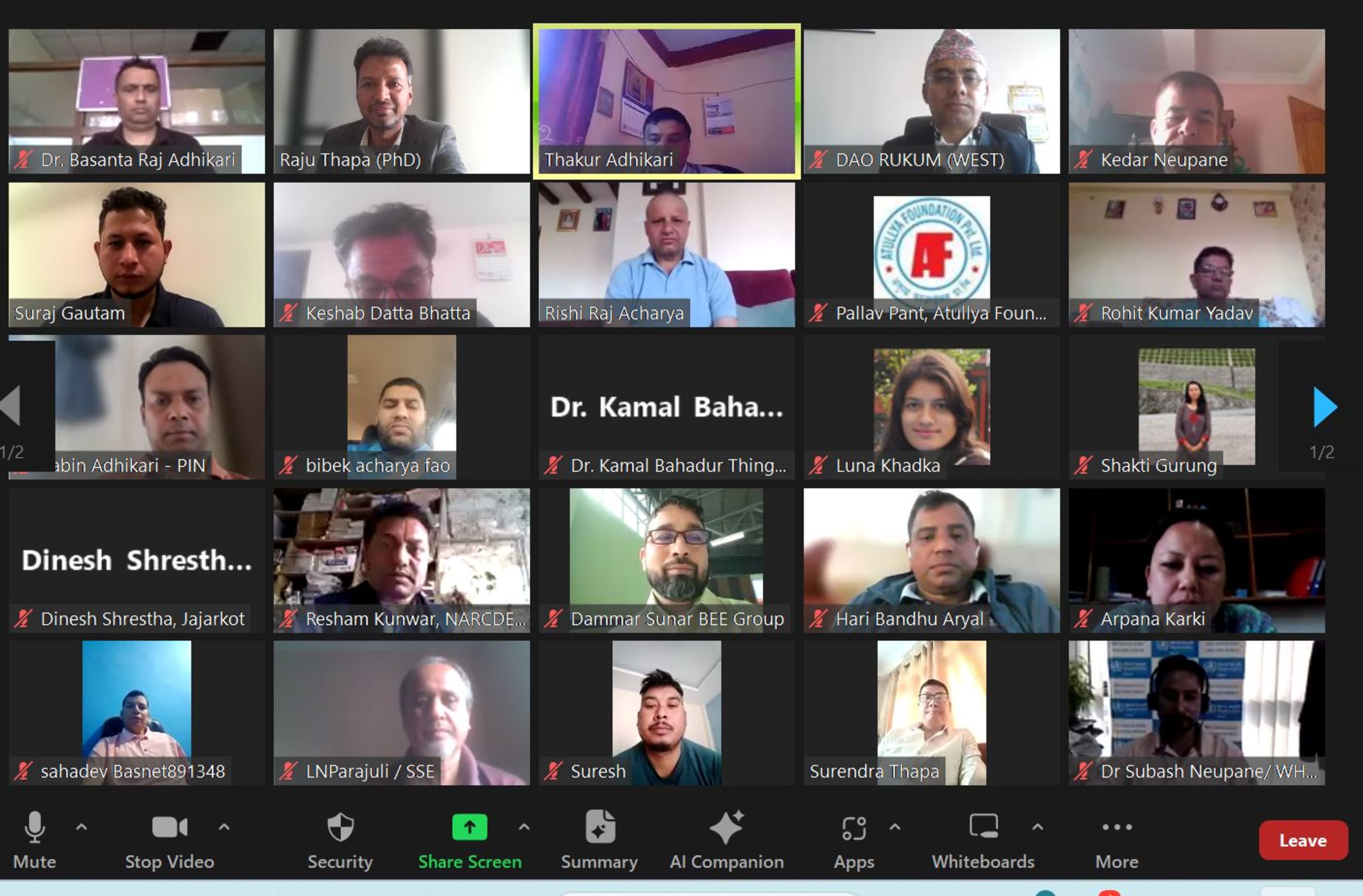
On May 2nd, 2024, DPNet Nepal organized a "Discussion Program on Jajarkot Earthquake Recovery." The program saw the participation of 40 individuals from diverse sectors, including NGOs, INGOs, and government representatives. Key speakers included Dr. Dijan Bhattarai from the National Disaster Risk Reduction and Management Authority (NDRRMA), Mr. Rishiraj Acharya, the Chief District Officer (CDO) of Jajarkot, Mr. Hari Prasad Pant, the CDO of Rukum West, Mr. Kedar Neupane and Former Secretary of the Government of Nepal. The program was facilitated by Mr. Suraj Gautam, General Secretary of DPNet Nepal.
Mr. Surya Bahadur Thapa, Immediate Past President, DPNet Nepal, began the session by extending a warm welcome to all participants. He outlined the program's objective, which aimed to offer insights into the ongoing recovery efforts following the Jajarkot Earthquake. The focus was on evaluating the progress achieved so far, identifying prevailing challenges, and exploring strategies to enhance collaboration among stakeholders. Thapa highlighted the onset of the monsoon season and the anticipated increase in storm cases. He emphasized the need for prompt action to accelerate the recovery process and address emerging issues effectively.
Mr. Kedar Neupane, Former Secretary Government of Nepal and DPNet Advisor, discussed several key issues during his address. He discussed concerns regarding the delay in the distribution of the second installment and the transition from temporary to permanent housing solutions. Additionally, with the approaching harvesting season, he emphasized the importance of preparedness for seeds and agricultural activities including storage facility. Mr. Neupane stressed the need for collaboration at all levels, beyond just governmental bodies. He called for timely coordination between development agencies, other institutions, and the government to ensure effective and efficient work towards addressing these challenges.
Mr. Hari Prasad Pant, CDO, Rukum West, provided an update on the current situation in the area. He noted that six months have passed since the earthquake struck West Rukum and Jajarkot, emphasizing the urgent need for guidelines on reconstruction before the onset of the monsoon season, and stressed that the funding should align with the capacity of the Nepalese government. Mr. Pant advocated for a system that can differentiate between the types and complexities of earthquake damage, facilitating proper categorization for either reconstruction or retrofitting of properties. He also highlighted the importance of addressing the reconstruction of schools and emphasized the need for collaboration between the three triers government and stakeholders to streamline recovery efforts. Furthermore, Mr. Pant highlighted the importance of understanding the requirements for rural reconstruction, taking into account the social and cultural significance of affected areas. He emphasized the significance of collaboration, timely distribution of aid, and infrastructure rehabilitation to ensure effective recovery for affected communities. He mentioned that coordinated efforts from all stakeholders will be essential in tackling ongoing challenges and facilitating sustainable recovery in the region.
Mr. Rishi Raj Acharya, CDO Jajarkot, highlighted that earthquake with its epicenter in Jajarkot, resulting in 101 fatalities and significant damage to social and cultural aspects. He also addressed that these details are outlined in a situation report provided by DPNet Nepal. Following the earthquake, effective search and rescue operations were conducted with support from the government and various organizations, including NGOs and INGOs. Rehabilitation efforts for damaged infrastructure in Jajarkot are ongoing. Mr. Acharya noted that out of 16 government buildings, 4 were completely damaged, including the District Administrative Building, District Court, and District Police Station. In the temporary learning centers, education is being provided to children and operations are ongoing. However, on Chitra 17th, a windstorm caused damage to the temporary learning centers, as well as the temporary health post and police station. This has created a critical situation in providing basic facilities to the people of Jajarkot. Rehabilitation efforts are crucial not only in terms of sociocultural aspects but also for sustaining income sources, as unemployment rates have risen. Many used to seek employment opportunities in India, but they are now staying in village due to earthquake damage. Mr. Acharya insights regarding shelter that 38,000 individuals have received the first installment, but delays are being faced in obtaining the second installment. As per the NDRRMA housing guideline, there is a provision of match fund which seeks fund from local level- 20%, provincial- 30%, and central levels- 50% and urged for the urgent wayout because local government is not in this position to allocate such a huge amount of money for reconstruction so the guideline should be amended to make it practical. He emphasized that there is a provision to send pictures of dismantled houses to ensure they are ready for reconstruction. However, he inquired about the procedure for houses that only require retrofitting. With the monsoon approaching, challenges persist as people lack adequate shelter, and service providers are struggling. Mr. Acharya elaborates that the damage assessment for infrastructure is still pending, hindering the construction of temporary shelters, which are 90% completed. He concluded that training programs for local laborers should be enhanced to aid in house construction. He also emphasized the necessity of providing psychosocial counseling to the affected communities from a health perspective.
Dr. Meen Bahadur Chhetri, advisor, DPNet Nepal, primarily focuses on the model housing proposed by Dr. Prof. Jib Raj Pokhrel, who constructs cost-effective houses using locally available materials like bamboo. He requested the CDO of both districts to consdier for the model houses built by Dr. Prof. Jib Raj Pokhrel. He also emphasized lessons learned from Melamchi, where houses with three rooms may not be suitable for large families. Therefore, the number of family members needs to be considered when building houses for effectiveness. He addressed that bamboo is not only used as a construction material but also for retrofitting purposes, making it a versatile option for infrastructure improvements.
Dr. Dijan Bhattarai, NDRRMA, discussed the recommendations made by West Rukum and Jajarkot, as well as the issue surrounding rehabilitation and recovery. He mentioned that the need for amendments in the guidelines has been recognized, and meetings and discussions are underway regarding this matter. For incidents such as fires, floods, and landslides, all three tiers of government should collaborate. However, in the context of major events like earthquakes, it has been acknowledged and discussed that the central level must play a significant role. The roles and responsibilities of the three tiers of government appear to be confusing and overlapping. He also informed that discussions are ongoing regarding the division of responsibilities as aid provision would be handled at the local level, search and rescue operations at the district level, temporary settlements overseen by the provincial level, and leadership in permanent settlement efforts would be taken by the federal level. He concluded by emphasizing the importance of collaboration among all stakeholders to effectively accelerate the reconstruction process.
Dr Raju Thapa, Chairperson DPNet- Nepal, provided an overview of the Jajarkot earthquakes, emphasizing the significant devastation caused by the earthquake event and providing situational updates. Dr. Thapa stressed that according to data from the 2021 census, there are 37,446 household, while the number of beneficiaries stands at 42,521 househld. Dr. Thapa also addressed the concern that some municipalities are forcefully asking earthquake affected beneficiaries to contribute at least Rs 1000 to be in in the first priority to get second installment, which imposes an additional economic burden. He also highlighted the dilemma regarding the dismantling of houses, noting that many people are hesitant to dismantle damaged houses, believing they could still serve as cowsheds. Additionally, he shared that humanitarian partners are providing WASH facilities and temporary shelters, which attracted people away from government schemes. However, delays from these partners led people to construct their temporary shelters on their own. Issues such as narrow spaces with zinc sheeting unsuitable for both summer and winter, increased incidents of family violence, rising school dropout rates, anxiety due to insect and snake dangers in temporary shelters, and the loss of forested areas in community forests for temporary shelter construction were also mentioned. People are also struggling with house dismantling, land fissures, and other challenges. In the closing remarks, Dr. Thapa provides recommendations including the need for clearer guidelines, extended support, and prioritization of vulnerable groups for future preparedness efforts.
Youtube Link:
